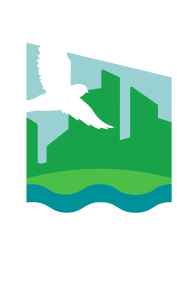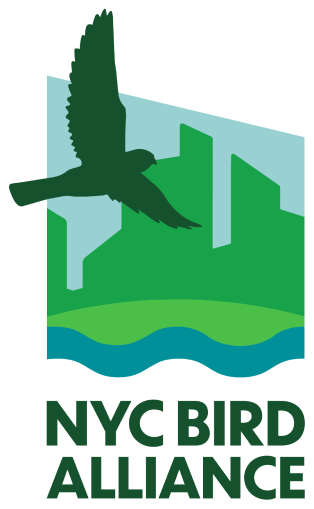The Year of Flaco: New Exhibition Chronicles Famous NYC Owl's Impact
category: GENERAL

Flaco surveys the City from an Upper West Side fire escape. Photo: David Lei
Suzanne Charlé | January 31, 2025
On March 3, 2024, hundreds of people stood shoulder to shoulder for a memorial in Central Park. They were not celebrating a politician or a beloved actor or singer. They were remembering Flaco, the Eurasian Eagle-Owl that flew into the hearts of New Yorkers after escaping from the Central Park Zoo.
On March 3, 2024, hundreds of people stood shoulder to shoulder for a memorial in Central Park. They were not celebrating a politician or a beloved actor or singer. They were remembering Flaco, the Eurasian Eagle-Owl that flew into the hearts of New Yorkers after escaping from the Central Park Zoo.
For over a year, legions of birders and other admirers tracked his movements, on fire escapes and water towers, watching pickle-ball players in Central Park and defying capture. No bird had ever captured the public imagination like Flaco, and when he died after colliding with a building on the Upper West Side, fans from all over the world paid tribute.
Now, his legacy will be celebrated in “The Year of Flaco,” an exhibition at The New York Historical, opening February 7. The idea for the exhibition came up after Valerie Hartman, a runner and intense Flaco fan, reached out last February to Rebecca Klassen, the curator of material culture at The New York Historical, suggesting that the hundreds of photographs, paintings and drawings, poems and letters and other materials that Flaco fans had assembled at the base of Flaco’s favorite oak tree should be archived.
When Klassen met with Hartman and other Flaco devotees, they stressed how much the escaped owl meant to New Yorkers and people beyond. In fact, Flaco headlined in The Wall Street Journal and The New York Times, which collectively ran more than a dozen articles and op-eds. He was also a star on local and national TV news programs and the subject of late-night talk shows. (One noted that after his escape from the Central Park Zoo, Flaco landed for a brief time on Fifth Avenue near Bergdorf Goodman clothing store; after police tried to catch him, he took off to a tree in front of the Plaza Hotel—a true New Yorker!)
Given his incredible cultural significance, wouldn’t it be great, Hartman asked, to have an exhibition timed to his escape—February 2, 2023, and his death a year later on February 23?
And so, in record time, Klassen put the show together. Included are poems, signs, and many letters people wrote (over 70) in honor of Flaco, leaving them at the base of “Flaco’s oak tree” on the northeastern corner of the 102nd Street cut-through and the East Drive in Central Park.
The New York Historical is famous for its collection of John James Audubon paintings and prints, and its Audubon’s Birds of America Focus Gallery will now feature a special showcase of watercolors and prints of owls found in New York—including the Barred, Great Horned, American Barn, Northern Saw-whet, and Eastern Screech-Owl, as well audio clips of their calls from the Macaulay Library at the Cornell Lab of Ornithology.
Given Flaco’s remarkable year of survival in the dense urban environment of New York City and how the bird drew attention to the conservation challenges faced by urban birds, Klassen collaborated with key organizations working to protect wild birds in our city: NYC Bird Alliance, the Wild Bird Fund, and the Lights Out Coalition. Visitors will see samples of bird-safe glass materials and learn about the bird-friendly legislation inspired by Flaco’s death, connecting Flaco’s legacy to ongoing efforts to make cities safer for all birds.
“Once Flaco was out in the world, he faced the same threats all wild birds do,” said Dr. Dustin Partridge, director of conservation and science at NYC Bird Alliance. “And the threats in the City are numerous, particularly collisions with buildings due to all the reflective glass used, and rodenticides, if the bird is a raptor like Flaco.” (A necropsy by Bronx Zoo pathologists found that Flaco had a lethal amount of rat poison and pigeon virus in his system.)
In fact, he noted “annually there are nearly a quarter million bird collisions with windows in the City—and across the nation, more than a billion.”
After Flaco’s death, a number of pieces of legislation were named after him, including the New York City Council Lights Out bill Int. 0896 introduced by Council Member Francisco Moya and the statewide Bird Safe building act S.7098/A.7808 introduced by Senator Brad Hoylman-Sigal and Assembly Member Anna Kelles.
Like so many other New Yorkers, Flaco changed Klassen’s interest in birds and wildlife. “This exhibition, speaking to so many people in birding groups was, in a sense, my spark bird.”
Klassen explained that she had always been interested in birds “as a regular person but found the birding community intimidating—I didn’t have binoculars.” However, while in Guatemala on vacation, she decided to do a bird outing and saw an owl. “Owls are incredible creatures!”
One particularly compelling part of the exhibition is a conversation recorded under Flaco’s oak tree. “You hear kids and sirens—the urban life Flaco experienced and the human interface. ‘It’s an owl,’ calls one kid. ‘It’s an owl!’”
Indeed, the North Carolina-born Flaco inspired many New Yorkers, with his courage and ingenuity. “He wasn’t a superficial icon,” notes Klassen, adding that many people wrote letters about how seeing him helped them through difficult times. “He was that beacon of hope.”





